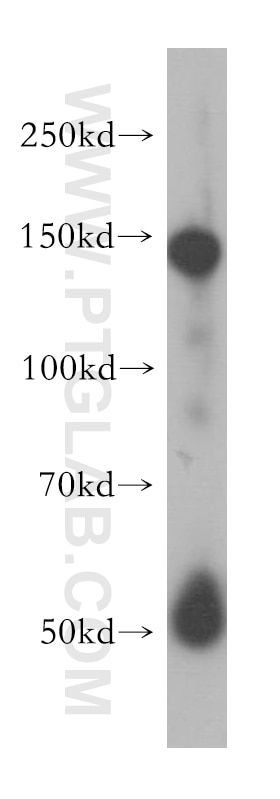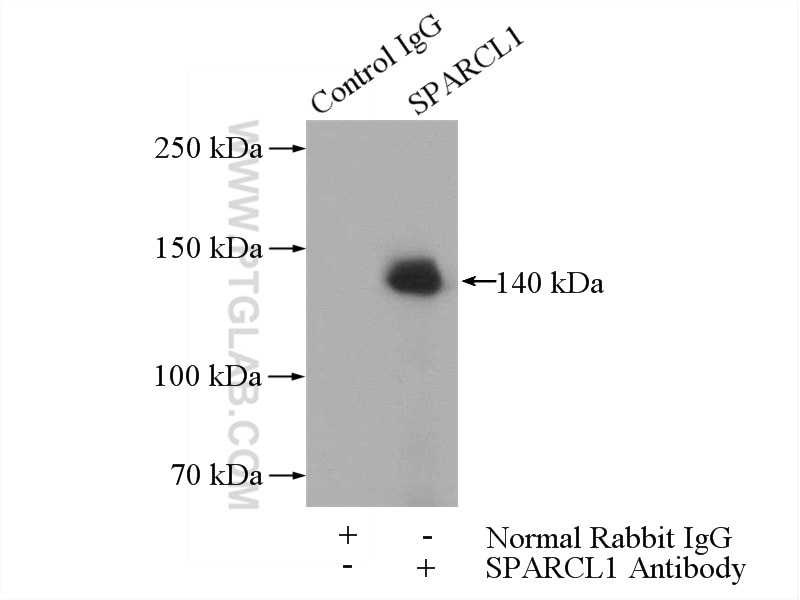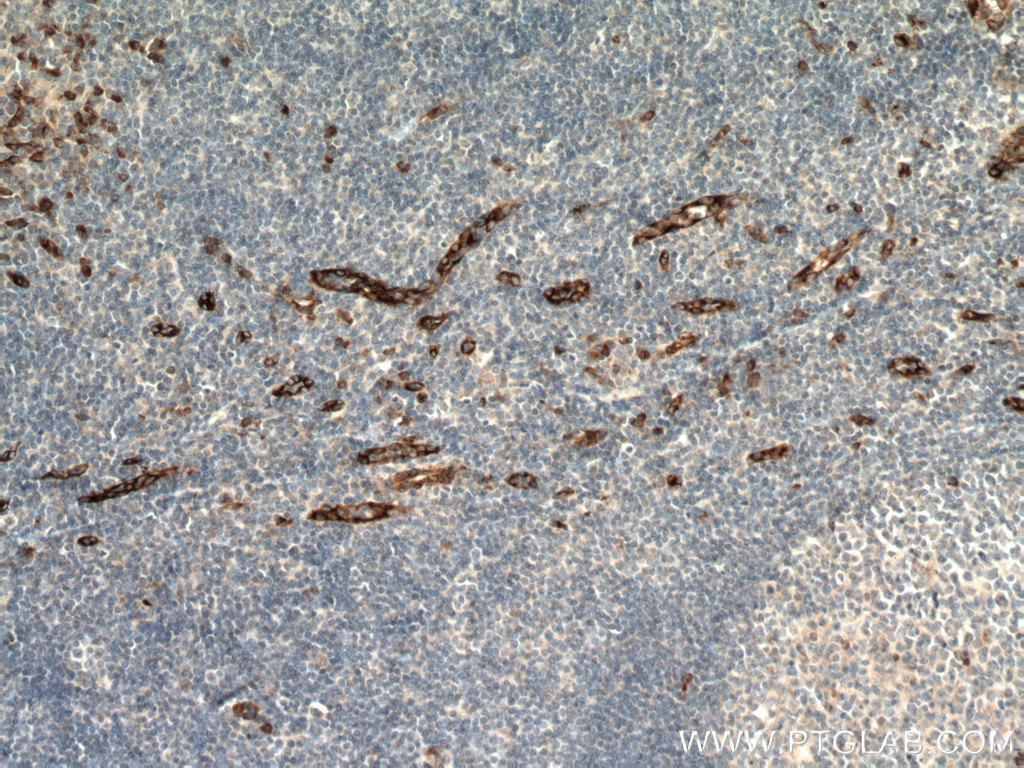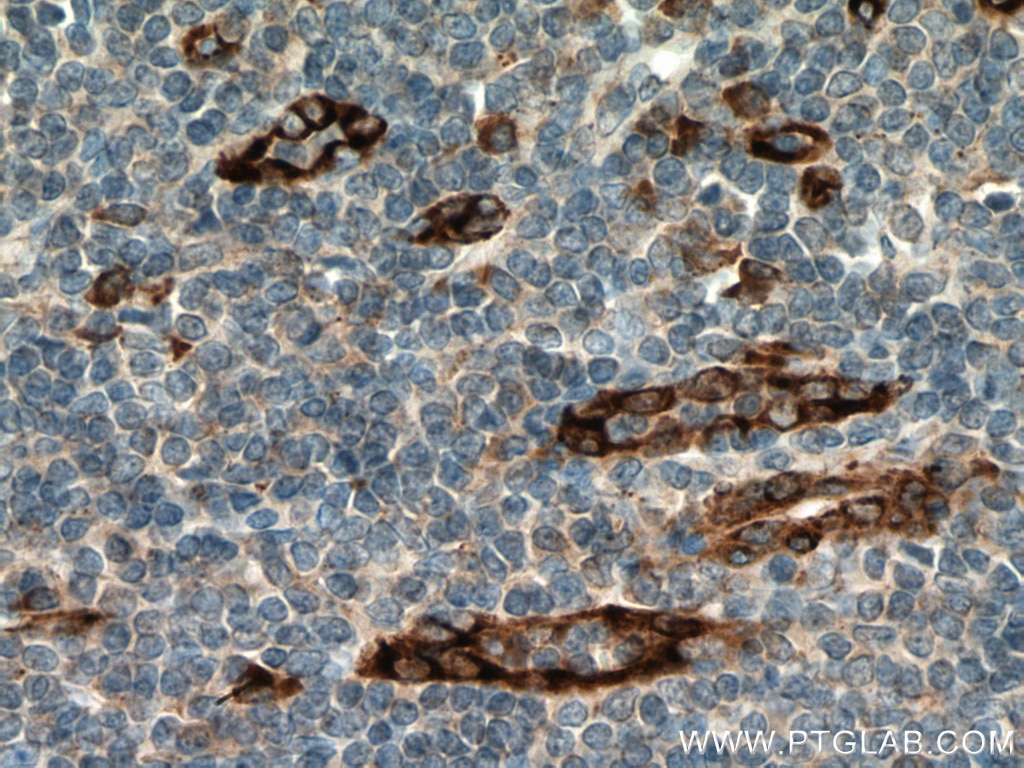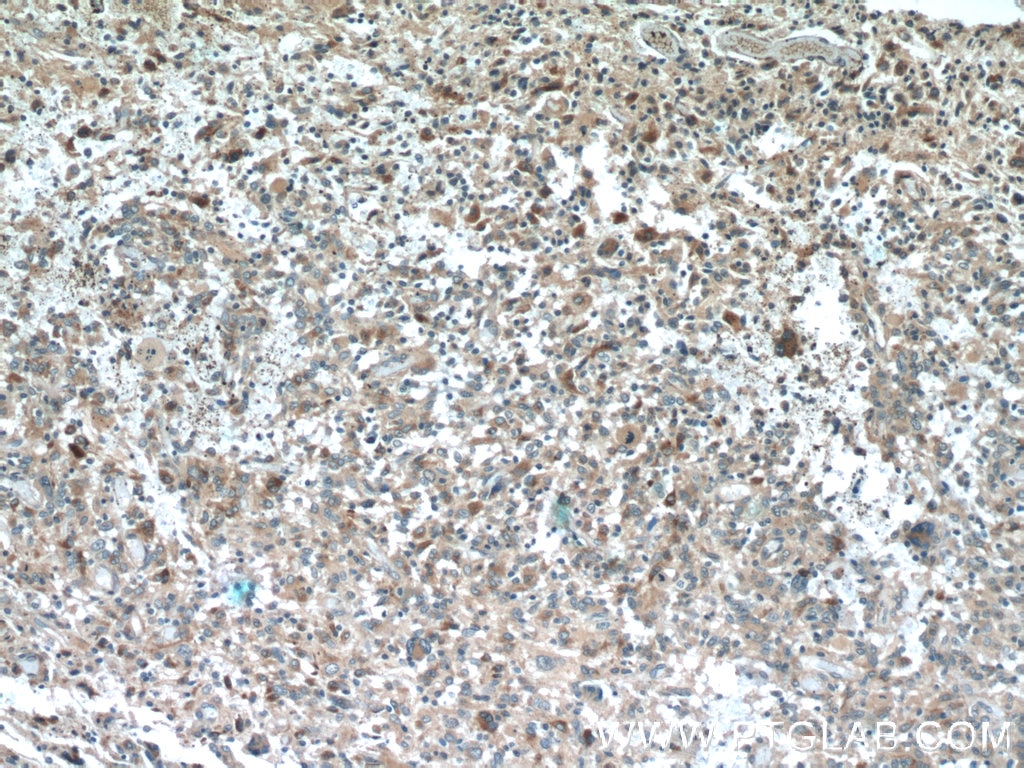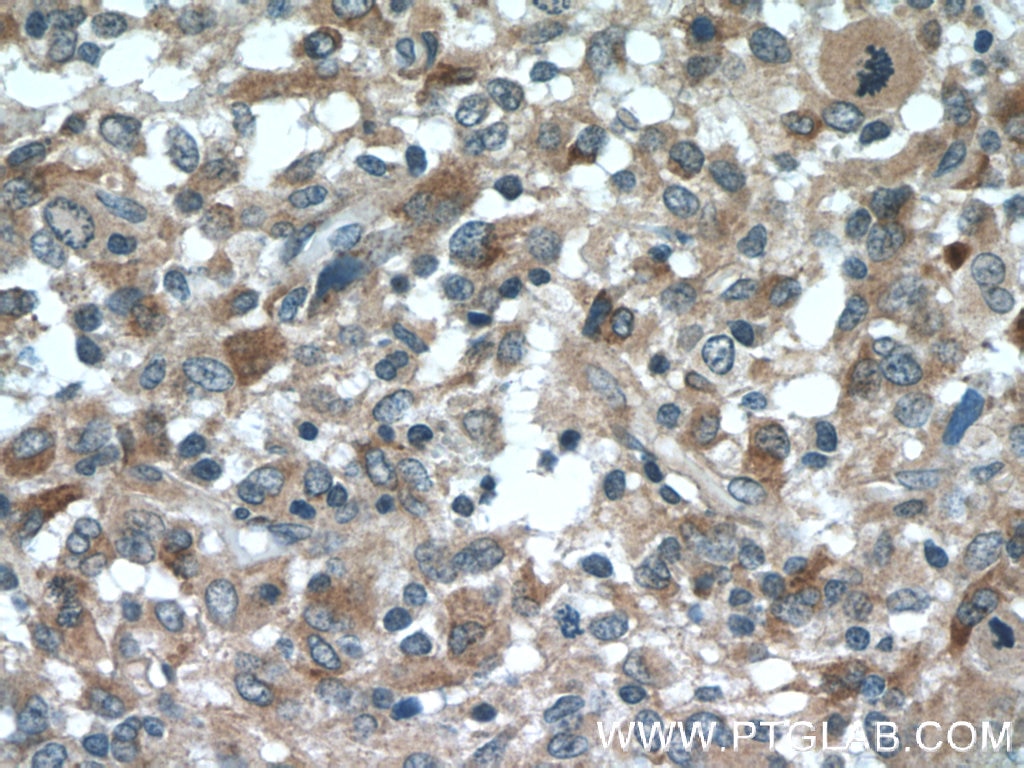Anticorps Polyclonal de lapin anti-SPARCL1
SPARCL1 Polyclonal Antibody for WB, IP, IHC, ELISA
Hôte / Isotype
Lapin / IgG
Réactivité testée
Humain et plus (1)
Applications
WB, IHC, IF, IP, ELISA
Conjugaison
Non conjugué
N° de cat : 13517-1-AP
Synonymes
Galerie de données de validation
Applications testées
| Résultats positifs en WB | tissu cardiaque humain |
| Résultats positifs en IP | cellules Raji |
| Résultats positifs en IHC | tissu d'amygdalite humain, tissu de gliome humain il est suggéré de démasquer l'antigène avec un tampon de TE buffer pH 9.0; (*) À défaut, 'le démasquage de l'antigène peut être 'effectué avec un tampon citrate pH 6,0. |
Dilution recommandée
| Application | Dilution |
|---|---|
| Western Blot (WB) | WB : 1:500-1:2000 |
| Immunoprécipitation (IP) | IP : 0.5-4.0 ug for 1.0-3.0 mg of total protein lysate |
| Immunohistochimie (IHC) | IHC : 1:50-1:500 |
| It is recommended that this reagent should be titrated in each testing system to obtain optimal results. | |
| Sample-dependent, check data in validation data gallery | |
Applications publiées
| WB | See 5 publications below |
| IHC | See 3 publications below |
| IF | See 1 publications below |
Informations sur le produit
13517-1-AP cible SPARCL1 dans les applications de WB, IHC, IF, IP, ELISA et montre une réactivité avec des échantillons Humain
| Réactivité | Humain |
| Réactivité citée | Humain, souris |
| Hôte / Isotype | Lapin / IgG |
| Clonalité | Polyclonal |
| Type | Anticorps |
| Immunogène | SPARCL1 Protéine recombinante Ag4448 |
| Nom complet | SPARC-like 1 (hevin) |
| Masse moléculaire calculée | 664 aa, 75 kDa |
| Poids moléculaire observé | 130-140 kDa |
| Numéro d’acquisition GenBank | BC033721 |
| Symbole du gène | SPARCL1 |
| Identification du gène (NCBI) | 8404 |
| Conjugaison | Non conjugué |
| Forme | Liquide |
| Méthode de purification | Purification par affinité contre l'antigène |
| Tampon de stockage | PBS with 0.02% sodium azide and 50% glycerol |
| Conditions de stockage | Stocker à -20°C. Stable pendant un an après l'expédition. L'aliquotage n'est pas nécessaire pour le stockage à -20oC Les 20ul contiennent 0,1% de BSA. |
Informations générales
SPARC-like protein 1 (SPARCL1), also known as SC1 or Hevin, is an extracellular matrix glycoprotein that belongs to the SPARC family. SPARCL1 is widely expressed in normal and cancer tissues, and has been shown to regulate cellular adhesion and migration. SPARCL1 has been implicated in tumor initiation, formation, and progression of various cancers, including pancreatic, prostate, bladder, ovarian, breast and non-small cell lung cancers.
Protocole
| Product Specific Protocols | |
|---|---|
| WB protocol for SPARCL1 antibody 13517-1-AP | Download protocol |
| IHC protocol for SPARCL1 antibody 13517-1-AP | Download protocol |
| IP protocol for SPARCL1 antibody 13517-1-AP | Download protocol |
| Standard Protocols | |
|---|---|
| Click here to view our Standard Protocols |
Publications
| Species | Application | Title |
|---|---|---|
CNS Neurosci Ther Endothelial genetic deletion of CD147 induces changes in the dual function of the blood-brain barrier and is implicated in Alzheimer's disease. | ||
J Neurochem Defective Synthesis and Release of Astrocytic Thrombospondin-1 Mediates the Neuronal TDP-43 Proteinopathy Resulting in Defects in Neuronal Integrity Associated with Chronic Traumatic Encephalopathy: In Vitro Studies. | ||
Cancer Biomark Integrated analysis reveals down-regulation of SPARCL1 is correlated with cervical cancer development and progression | ||
PLoS One Secreted protein acidic and rich in cysteine (SPARC) knockout mice have greater outflow facility. | ||
J Chem Neuroanat Olfactory ensheathing cells facilitate neurite sprouting and outgrowth by secreting high levels of hevin. |
